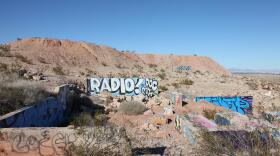Mount Charleston has long been a site of raging wildfires sparked by lightning, but in 1955, it was the site of a different kind of conflagration. These particular flames issued from a spectacular plane crash, a crash that killed all 14 passengers on board on the morning of Nov. 17. Immediately following the disaster, government secrecy reigned. Airmen from Nellis stood sentinel at a roadblock, turning back news reporters and curious drivers who got as far as the Charleston Lodge: Nothing to see here, just a, um, business plane that went down on its way to the Nevada Test Site. Unlikely tale. Why was a business flight flying over the Spring Mountains? Documents declassified in 1998 eventually told the entire story. Among the passengers were ... camera technicians? Physicists? Flight engineers? CIA agents? They comprised one of the teams helping build America’s next generation of reconnaissance aircraft. The men in the C-54 were en route from a Lockheed facility in Burbank, Calif. to Nevada’s Groom Lake. Later known as Area 51, that’s where the government was continuing testing of its U-2 spy plane.
This Cold War disaster does have one upbeat story tied to it. Passenger list in hand, Lockheed representatives traveled to the homes of the victims to inform their families of the tragedy. When they knocked on the door of a home on the evening of November 17, they must have been startled when Lockheed employee Bob Murphy answered the door — the man whose death they were there to report. He had overslept and missed the flight.
Sources: Area 51: An Uncensored History of America’s Top Secret Military Base, the Las Vegas Sun







